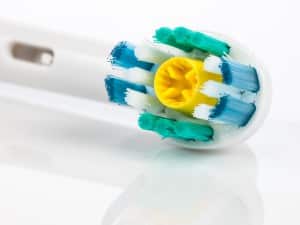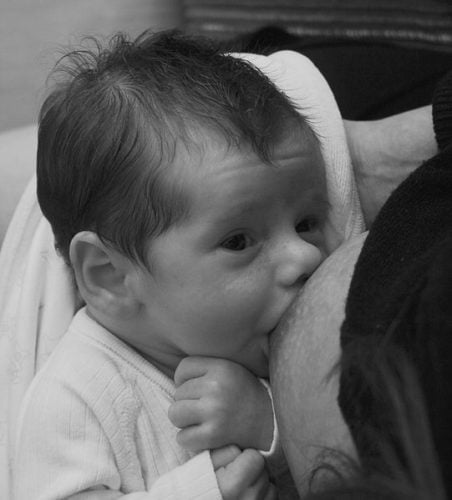To learn more about engorgement techniques, go to Hints for Breast Engorgement.
Ultrasound techniques provide micro-massages using a probe. Physiotherapists will apply a gel, like during a pregnancy ultrasound. The specialist will then start from the base of the breast putting pressure on the breast towards the tip of the nipple, following the course of the red or painful blockage. If necessary they might circle the breast as well.
The micro-massage will break up the milk clots that formed, blocking the ducts. Released heat during the treatment can have an impact. Heat dilates the vessels and releases the liquid inside the breasts. This is why you should breastfeed your baby immediately after the treatment, as the milk will flow abundantly. Breastfeeding will empty the breasts properly. If the baby isn’t due for a feeding, use the pump to extract the maximum amount of milk.
Ultrasound techniques should be used for significant, distended or painful engorgement. It’s quick and effective. The session lasts for about 12 minutes and there is little pain involved. The mother will only feel a bit of heat during the treatment.
The treatment is often repeated the next two days to make sure the engorgement has dissipated. The treatments will be shorter and less intense.
To learn more about ultrasounds and breastfeeding, go to my other entries on the topic.
If you have a duct blocked with coagulated milk, you can use an electric toothbrush at home. Like an ultrasound, the toothbrush will cause micro-vibrations and help break up the clot.
If you tackle the problem early, get relief and prevent repeat occurrences, congratulations, that’s great. But if you fail, potential complications can occur with pathological engorgements::
- Repeated engorgements;
- Regular blockage of milk ducts;
- More serious, lactation mastitis in one (unilateral) or two breasts (bilateral), infectious mastitis and even breast abscesses.
Engorgement is a normal process after childbirth. Some circumstances make your engorgement disproportionate and it can harm your breastfeeding.
I hope this entry can help you manage your breastfeeding if engorgement happens to you.
Talk soon,
Marie
The Baby Expert.


